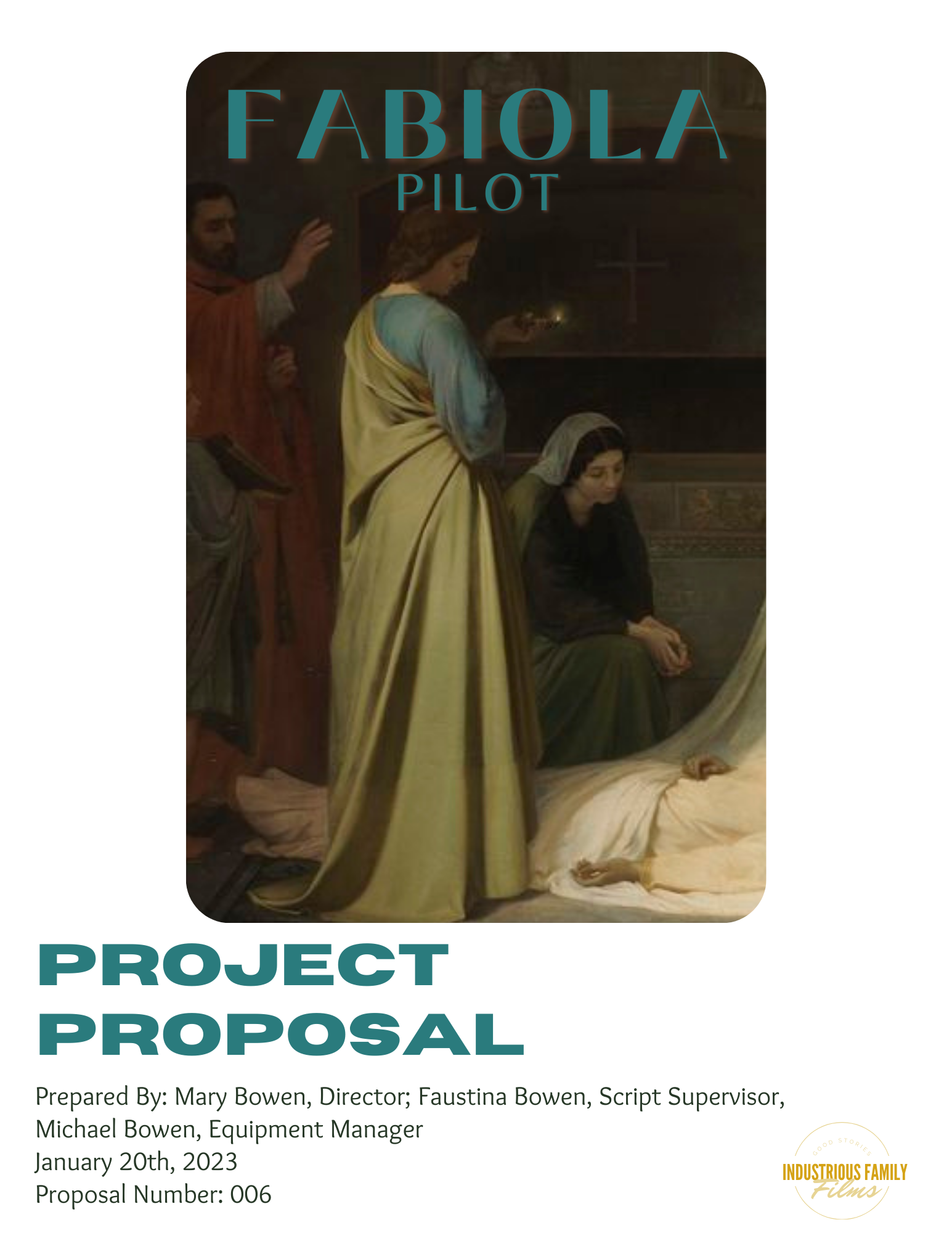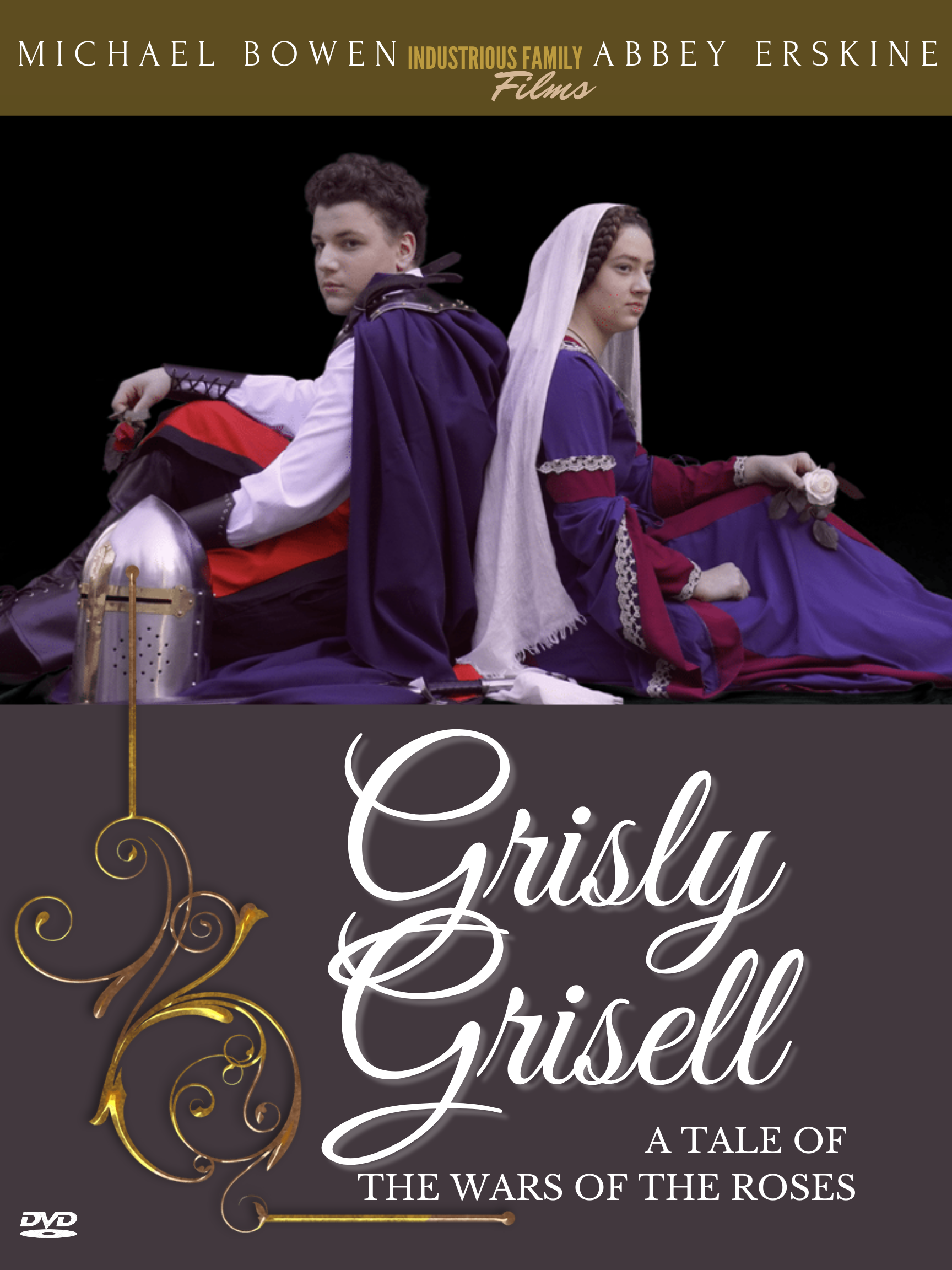Don't miss your chance to invest in 'Fabiola'!
Visit our crowd-funding page for our new production, "Fabiola"!
- Home
- Movie Making Course
- How To Create A Proposal
Put Your Commitment Down On Paper By Learning How To Create A Proposal Complete With An Outline, Treatment, Budget And An Optimistic Timeline
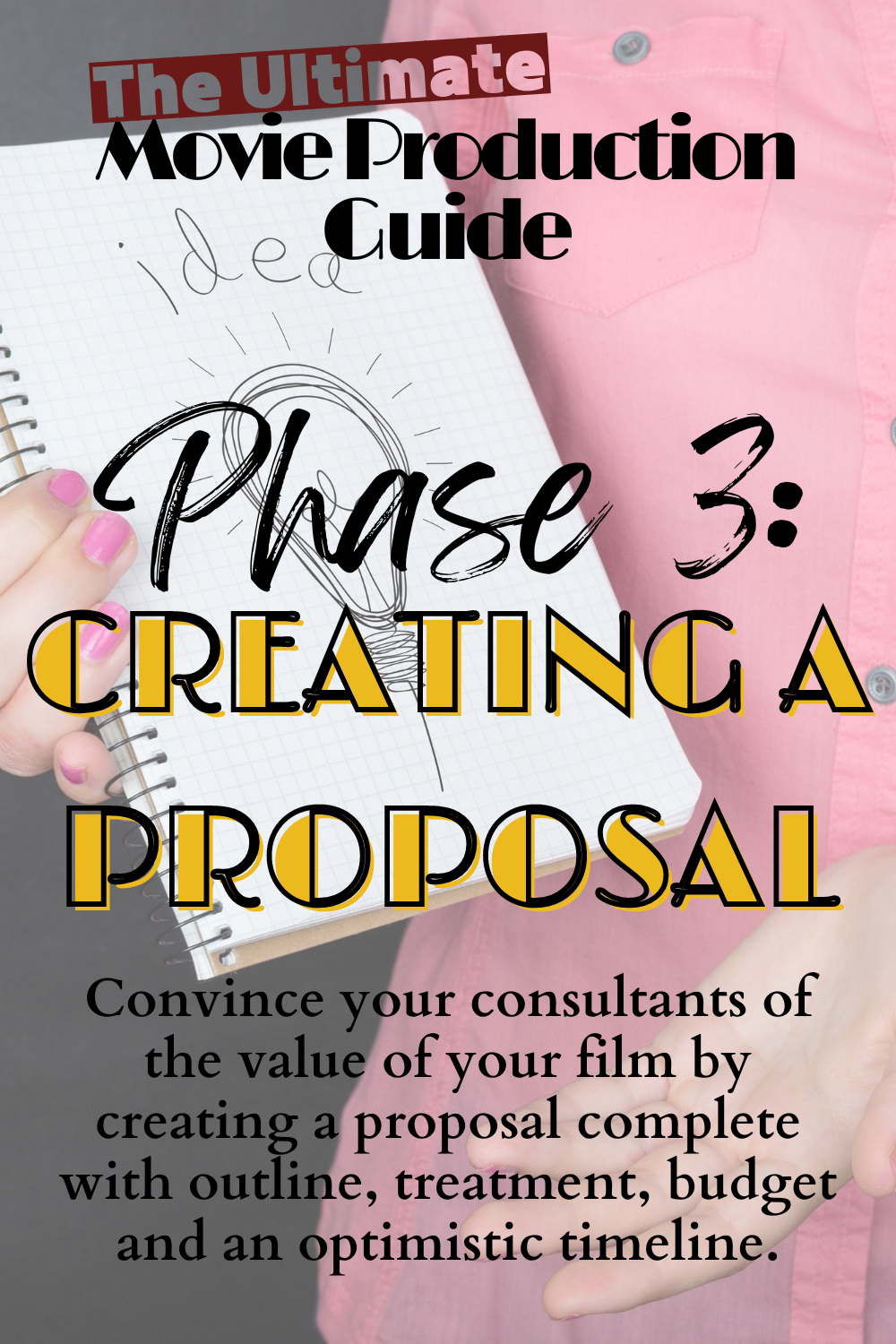
You made it: Phase 3! In this phase, you will learn how to create a proposal.
Proposals are very important to giving yourself a feeling of professionality. It forces you to make a timeline, make a budget, save your outline, and be held responsible to the person you are presenting it to. This Phase’s tasks will teach you how to:
- Make a cover
- State your objective
- Make an outline
- Plan how to treat difficult scenes
- Make a project budget
- Make an optimistic timeline
- Present your proposal to project consultants
You've got some work to do, so let's get started on how to get that proposal ready!
Task 1. Make Your Cover
Begin making your cover by selecting an image that you feel sets the perfect tone for your movie. You want this image to intrigue the person to whom you present it.
We usually choose an image we think the cover will most likely look like.
Notice how the Fabiola Pilot proposal image has a strong contrast between light and dark--like the contrasting good and evil in the story--and how it shows a pious person assisting at the burial of a martyr in the catacombs.
At a glance, this image sums up the entire Fabiola story pretty well.
Write the title of your movie across the top of the image. Choose a font that fits the title. Is this a medieval era film? Choose an old English looking font. Is it an ancient film? Choose a font that looks like it is cut in stone. Generally, however, you want a font that is still easy to read.
What is the mood of your main character? Cute, funny, strange, serious? Make the font agree. Use the same process for the font color.
White and black are rather generic. They are well used when the image itself speaks very loudly or you want the font to be what stands out.
Red denotes anger, war, bloodshed.
Green is rarely used. It shows evil, sci-fi, and computers. A more foresty green hints at woods (think Robin Hood) and the great outdoors.
Blue speaks of calm, collectiveness, and peace.
Yellow and orange express action, joy, adventure.
Bet you didn't think that fonts and colors were something I was going to talk about in this phase...Don't worry, I'm done.
Under the image, write "Project Proposal" in a headline size. The next three lines should be filled with:
- Who the proposal was prepared for
- Who prepared the proposal as well as how they are involved in the project (director, script supervisor, assistant director)
- The date the proposal was prepared
- The proposal number. Start with 1 or 001. I know, it sounds unimpressive but the more projects you make the better the number looks.
You may also want to include your logo in the bottom right corner. If you don't have one yet, just leave it blank. It looks fine either way.
And there's your cover! Make sure it has everything by looking over the Task 1 checklist.
Task 1 Checklist:
1. Find the perfect image for the cover of your proposal
2. Choose the right font and font color for the title of the film
3. Put the prepared for and prepared by names, the date, and the proposal number at the bottom of the cover page
4. Optional: Add your logo to the bottom right corner
Task 2. State Your Objective
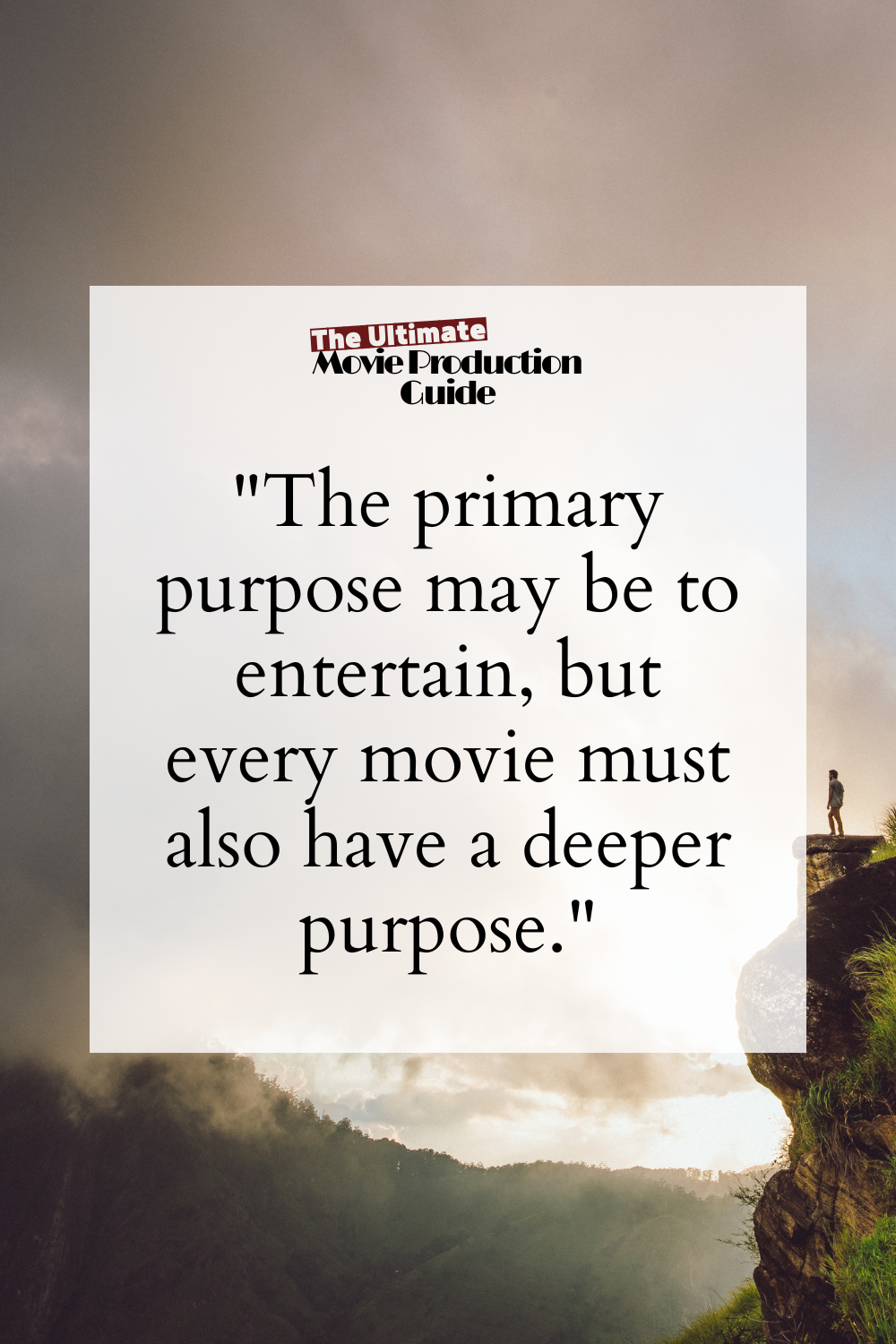
What is the purpose of your movie? Of course, the primary purpose may be to entertain, but every movie must also have a deeper purpose. What is the moral?
Are your characters facing a challenge that resonates with your audience? Do they have a very broad challenge that everyone faces, or is it very specific to a certain kind of person in certain kinds of circumstances?
Max & Carlota, for example, tries to tell of a largely unknown and forgotten event of history. It tells of heroes who deserve remembering and that is the objective of the film.
Your objective should also include anything you intend on improving on as you make the film: cinematography, acting, sets, costumes...
Put your objectives into paragraph format and place it under an "Objectives" heading.
Task #2 Checklist:
1. Decide on the objective of your film: the message.
2. Decide what you are going to be improving on with this film.
3. Form this information into a paragraph.
Task 3. Make An Outline Of The Film
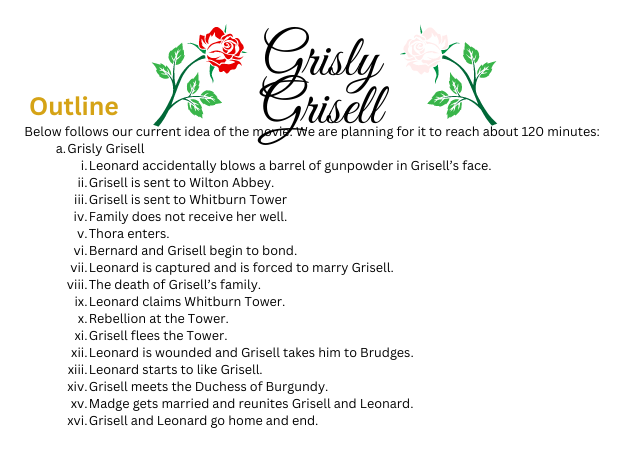 The Grisly Grisell Outline Has A Simple Outline Structure The Grisly Grisell Outline Has A Simple Outline Structure |
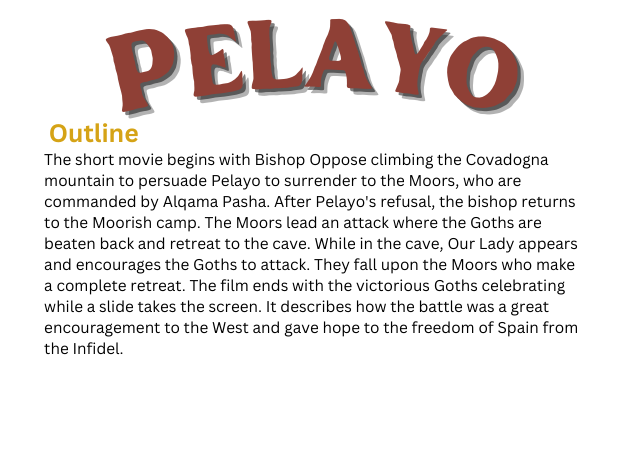 Pelayo's Outline Has Been Reworked Into A Paragraph Format Pelayo's Outline Has Been Reworked Into A Paragraph Format |
If you already thought out an outline in Phase 2, following directions earlier is going to pay off now.
Go get your outline and paste it on the second page of your proposal.
Make sure that any nicknames or abbreviated descriptions are more clear for anyone reading your proposal who is not as familiar with the story as you are. You can even work the outline into a paragraph format instead of a list. Be sure it is enough information to convince the reader that this will be a good story to make into a movie.
Task #3 Checklist:
1. Write or paste your outline under the objectives. You can either leave it as a simple outline or make it into a paragraph.
2. Be sure that it makes sense, follows your mountain and is enough information to convince the reader that this is going to be a great movie.
Task 4. Plan And Include Treatment For Difficult Scenes
Do you have a few scenes that are going to be difficult to film and make believable? That's okay. Just make sure you have a plan for how you are going to put them in the film.
- Does your film have a weapon dropping?
- Does the entire movie take place in medieval England and you don't have a big enough budget to create all the sets?
- Do you need a few windmills?
These things all are great and maybe necessary to your film, but you need a plan on how these things are going to make it to your end product. What is more, your treatment needs to be doable.
Are you going to use miniatures and make it look like it's life-size? Are you going to buy stock footage? Are you going to use a green screen?
These are the questions that you answer in the treatment part of your proposal. First describe the scene, then use bullet points to explain how you are going to film it. Also consider any unnecessary scenes that you may delete and include them under a "Scenes We May Delete" heading.
Task #4 Checklist:
1. Think about the scenes that are going to be difficult to film and write them down.
2. Brainstorm ways to film these difficult scenes and describe them under the scenes.
3. Write down the scenes that you may delete.
Task 5. Make A Project Budget
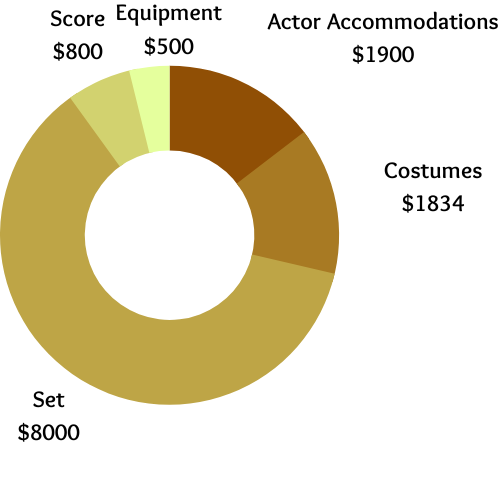 The budget for our Fabiola Pilot was a single scene where we really wanted to invest in the set.
The budget for our Fabiola Pilot was a single scene where we really wanted to invest in the set.What do you need for this film? Make an itemized budget (on a separate sheet, of course) of all the props, costumes, and set designs of your dreams. Don't forget to include any equipment upgrades you are going to want for this film.
Money is no object for this budget.
Next, make a budget that is full of items that are the least you can get away with using. Consider that you can use things that you already have and things you can borrow. Try to be as frugal as possible while making this budget.
Separate the items in your big budget into these categories:
- Transportation
- Catering
- Props
- Sets
- Costumes
- Make-up
- Score
- Pressing and releasing
- Premiere
- Equipment
Categories that you may not need for some projects are “Payroll” "Housing Actors" "Professional Fees", "Marketing" and “Rent”. Usually for those first few films these categories will be a little bit much. You will do more detailed budgeting in Phase 4.
For now, just get a rough idea down in your proposal and add that there is room in the budget to spend more or less depending on funds. Telling yourself that most low-budget films are under $300,000 and having that be your budget doesn't work.
Be realistic with yourself on how much you are likely to be able to raise.
No one is going to just give you $300,000, it's not going to fall out of the sky, and it will take you a really, really long time to save that up that amount. Use real numbers. Mention in your budget on the proposal that you have room to spend less or more depending on the availability of funds.
In this section also include a brief description on how you intend to raise funds.
- Will you do fundraisers?
- Will you use pledge drives?
- Will you send letters?
- Will you get a day job and use the money to fund the film yourself?
- Will you seek one large donor who will cover the entire cost of production (not the best or easiest way)?
- Will you use a combination of these methods (recommended)?
Task #5 Checklist:
1. Make a rough but reasonable project budget.
2. Make a wheel or graph of your budget and put it on your proposal.
3. Brainstorm and include ways you are going to raise your funds.
Task 6. Make An Optimistic Timeline
#1. Script
Let me tell you right now: You are going to be very surprised at how long it takes to make a movie.
By the time you are making your proposal, your script should be finished or near finished. Set a deadline for it to get back from your consultants and edited as much as it's going to be. That is the first deadline for your timeline.
#2. Casting
Next, choose a day to cast. You may not need too much time, maybe two weeks after the script deadline. Now, this is not to say send out invitations to your potential cast.
Right now, this is just your personal timeline. You never know what's going to happen with your script. It might need a total haul over after your consultants send back their thoughts. The less people you need to reschedule something with the better. For now just pick a date for yourself.
Second deadline for your timeline.
#3. Set Completion
After you have a casting day sort of set in your mind, think about building sets. How long will it take you to build the first set? When you are making an independent film, you are not going to have the luxury of all your sets being ready to rapid-fire film in.
You are probably going to need to tear down one set to get the next one up. So, decide when your first set is likely to be ready.
A month after auditions? Or will you be working on it leading up to auditions and be practically ready by the time you host auditions?
Whatever the case: decide when you think you will be done and add two weeks. If you are ready earlier, great! Start filming.
#4. Complete Filming
One page of script is about an hour of filming, one minute of edited film. With that in mind, how long is your script? 120 pages? That's 120 hours of filming.
Now you need to be really realistic on how much time you and your actors are going to be able to dedicate to the film at a time. 8 hour days puts you at 15 days. 15 days is about 3 work weeks. Not bad, you may think.
The thing is, you are probably not going to be able to give 5 days a week to your project, at least not the first few films. Especially if you or the bulk of your actors are still students. If you are unable to pay your actors, they probably aren't going to be able to dedicate that much time either.
What most people are going to be able to do, at the most, is 3 days a week, 4 hour days. Your 120 page script will take about 10 weeks that way. Whatever you come up with for a projected duration, double it. 10 weeks x 2 = 20 weeks → 5 months.
That's your next deadline.
#5. Editing
You can work on editing as you go, but it doesn't save too much time. It takes almost as long as filming. To be safe, say about the same as filming. So, if your 120 page film takes 5 months to film, it will most likely take 5 months to edit as well. If this is a few projects in and you have a good idea of how long it takes you to edit something, that's great! Base your deadline for editing on that.
#6. Music
If you are sending your music somewhere to have it written especially for your film, you of course have to arrange a deadline with your composer, but generally music also takes a few months (like 3-6).
#7. Premiere
When to have your premiere is largely dependent on whether you are having a live event or a virtual premiere. Both take a lot of time and planning. A physical premiere with red carpet and Old Hollywood glamour plus a silent auction and speakers takes about another month to plan.
Plus, you may want to have it at a certain time of year, such as summer or early fall. Now that your movie is complete, it really doesn't matter too much when the premiere is, just make sure you don't have it so far out that the actors and crew aren't interested anymore!
A virtual premiere over the internet also takes careful and sometimes lengthy planning, especially if you are including a conference. This is a premiere that you can usually plan and have ready by the time the music is done. Even one week after music completion is sufficient for a LIVE premiere.
When you are writing a timeline, it's better to err on the side of not enough time than too much time.
An abundance of time will make you feel like there's no rush to get to the next step and things will get very drawn out. I like to remember this quote from Leonard Bernstein:
"To achieve great things, two things are needed: a plan, and not quite enough time."
And you want to achieve great things, right?
An Example Of What To Expect Your Timeline To Look Like
Let's say it's February 12th, 2023 when I am writing my timeline. It's been about a week since I sent the script to my consultants. Here's what my timeline will most likely look like for a 120 page script:
- Script Finalized - March 3rd, 2023
- Casting - March 18th, 2023
- First Set Ready/Start Filming - April 22nd, 2023
- Complete Filming - October 21st, 2023
- Complete Editing - March 16, 2024
- Music Done - September 21st, 2024
- Premiere - October 19th, 2024
Task #6 Checklist:
Make your timeline including deadlines for:
1. Script
2. Casting
3. Set construction
4. Filming
5. Editing
6. Music
7. Premiere
Task 7. Present Your Proposal To Project Consultants
Now that you've gotten all the hard work part of your proposal done, it's time for the easy part: giving it to your consultants. This can be whoever you want to be convinced that this story needs to be a movie.
You can angle your proposal to be for your producer, the author of a novel you want to turn into a movie, or even potential large donors.
Task #7 Checklist:
1. Present your proposal to the people you think need to know about it.
Grisly Grisell Proposal Example
As you can see from the Grisly Grisell proposal, there are a lot of things that just change during production like the timeline, and our dreams about it having it be a musical.
All done with creating your proposal? Great! Now it's time to move onto Phase 4:
What Do You Propose?
Did I miss something on this page? Do you have any more questions about your current proposal, our current proposal, proposals in general? Please leave it below. I'd be happy to help you with them!
Even if you don't want to ask a question and just want to tell us about what you are up to with your proposal, we would be happy to hear about it and celebrate your accomplishments with you. So, please, don't hesitate to tell us what you are thinking!
